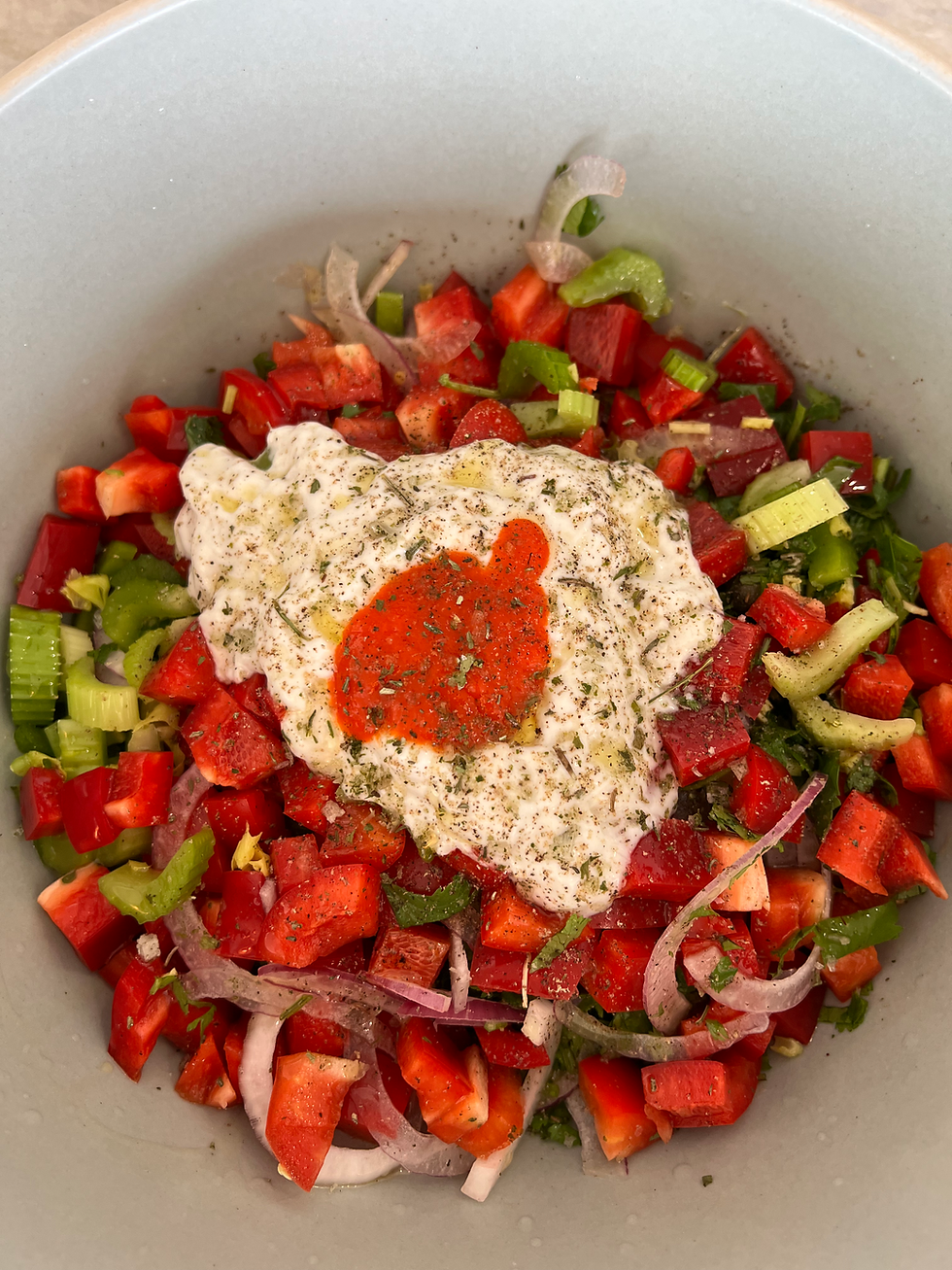PORTION CONTROL TIPS AND TRICKS!
- Lauren Haas

- Aug 27, 2018
- 3 min read

Plan of Action: Focus on portions and not eating until too full, especially at night. Eat until 80% full. Also, make sure when you go out to order a house salad or cup of soup so you are not hungry when you leave. You can also order a side of steamed veggies with your entrée to make sure you have enough food. Just tell the waitress, “Steamed, no butter or oil.” And of course finish that statement with a huge smile!
How much to eat:
- Proteins, 4 oz (size of a deck of cards or a checkbook)
- Nuts, ¼ cup (23 almonds, 1 of the snack bags, or the size of a golf ball)
- Beans, ½ cup (size of a light bulb)
- Hummus, 2 tablespoons (size of a golf ball)
- Almond or nut butters, 1 tablespoon (1/2 of a golf ball)
- Apple, pear, oranges, 1/2 cup (size of a golf ball)
- Berries, 1 cup (size of a baseball)
- Olives, 1 tablespoon (5 whole)
- Avocado, ¼ of a whole
- Soup/chili, 1 cup (size of baseball).
- Steamed and raw vegetables are a free food, so eat as much as you want!
Portion Control Tips:
1. Measure accurately. For foods and beverages, use gadgets like a measuring cup, tablespoon, teaspoon, or food scale.
2. Learn how to estimate serving sizes (See above). For example, 4 ounces of cooked meat, fish, or poultry is about the size of a deck of cards. Other easy measurements to eyeball include:
- ½ cup is the size of an ice cream scoop
- 1 cup is the size of a tennis ball
- 1 ounce of cheese is the size of a domino
3. Use portion control dishware. Pick out smaller plates, bowls, cups, and glassware in your kitchen and measure what they hold. You might find that a bowl you thought held 8 ounces of soup actually holds 16, meaning you’ve been eating twice what you planned.
4. Dish out your servings separately. Serve food from the stove onto plates rather than family-style at the table, which encourages seconds. Put leftover food in the fridge before you start dinner. Out of sight, out of mind!
5. Make your own single-serving packs. Re-portion bulk quantities of favorite foods into individual portions in zipper bags so that when you’re in the mood for some food you’ll instantly see the number of portions you’re preparing and have pre-made snacks available!
6. Add the Almond milk before the coffee. When possible, put your Almond milk into the cup before adding the hot beverage to better gauge the amount used.
7. Measure oils, nuts and avocado carefully. This is especially important because fats (even the healthful kinds like olive and safflower oils, avocado and nuts) have so many calories; DON’T pour oil directly into your cooking pan or over food. 1 tablespoon is a serving.
8. Do not eat nuts straight from the bag. Use your individual serving packets or count them and bag then in a zip lock.
9. Control portions when eating out. Eat half or share an entrée with a friend. If eating a salad, ask for dressing on the side. Dip your fork into the dressing and then into the salad.
10. Fill up on vegetables. Eat a cup of low-calorie vegetable soup or a salad prior to eating a meal or even going out.
11. Always order a vegetable house salad or vegetable, chicken veggie or miso soup when dining out. Dressing on the side.
12. Listen to your hunger cues. Eat when hungry and stop when satisfied or comfortably full. Try to gauge when you are 80 percent full and stop there.







Comments